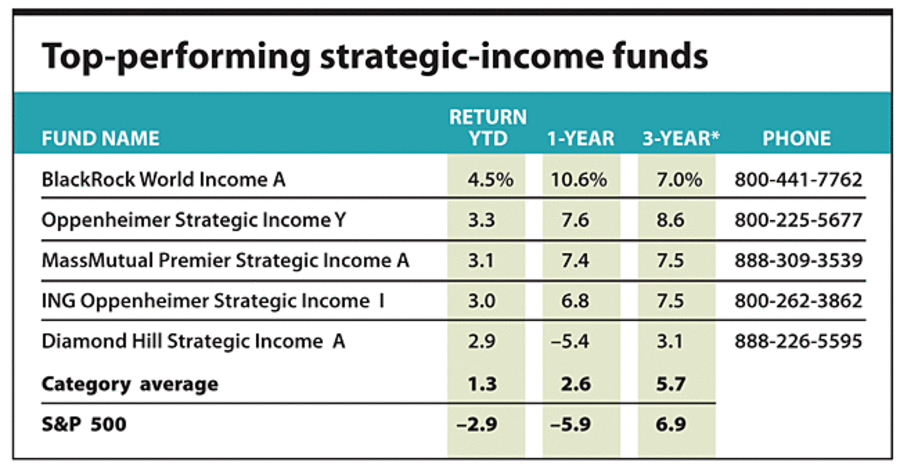Is it time for a broader bond strategy?
Loading...
Today's stock market is volatile enough to make many investors yearn for the safe harbor of fixed-income securities such as bonds and cash equivalents.
At the same time, few wish to settle for the 2 percent yields on Treasury bonds.
Enter strategic-income funds. These mutual funds permit portfolio managers to change the bond mix as conditions warrant. The general theory is that when one bond sector zigs, the others may zag.
Unlike single-sector bond funds, strategic-income funds, a.k.a. multisector funds, offer reduced risk through broad market exposure. They mostly contain a mix of US government, US corporate investment-grade, and high-yield bonds. Usually a cap or floor applies to each sector to reduce risk. Not only are these funds multisector, but they can be multicountry – many invest outside the United States in sovereign bonds of developed as well as emerging-market nations.
That's the upside. The downside? "The risk is that you can get caught looking the wrong way if you decided to go heavily in a certain area and it hasn't worked out," says Paul Herbert, a senior mutual fund analyst at Morningstar Inc., in Chicago. "Hopefully, you're diversified enough and that hasn't worked too badly against you."
One fund that took a wrong turn last year is T. Rowe Price Spectrum Income Fund, which tends to outperform the bond market in a strong economic environment and underperform in a weak economy. "For well over a year, we underweighted high-yield bonds," says Ned Notzon, the fund's portfolio manager. "We didn't think we would have as weak an economy."
Despite the market's doldrums, the number of multisector funds has been expanding. Morningstar counts more than 200 funds in its multisector category, including funds of all share classes. Several fund companies, including Thornburg Investment Management and Hartford Mutual Funds, have rolled out new products over the past six months.
For the most part, the funds have generated fairly consistent returns over the long term, according to Morningstar. But they returned only 4.5 percent last year, underperforming the general bond market. "Many managers were caught off-guard by the rapid deterioration in the high yields, especially during the second half of the year," says Morningstar's Mr. Herbert. The high-yield market returned just 1.7 percent in 2007.
But many experts say these funds are worth considering now, predicting volatility ahead in all bond sectors. Broadly diversified shareholders have the best chance to do well, whether bonds recover quickly or slowly, they say.
Many of these funds started as high-yield bond funds in the 1970s and began diversifying in the mid-to-late 1980s, with some adding leveraged loan products and convertibles. In the past 10 to 15 years, an increasing number have used derivatives, futures, and currencies to offset risk and generate higher returns.
Oppenheimer Strategic Income Fund, for example, made fortuitous investments last year on Turkish and Brazilian currencies, reflected in its 9.1 percent return, and was among the top-performing funds in Morningstar's multisector category. Loomis Sales' two multisector funds also benefited greatly from investments in appreciating currencies in Asia and elsewhere, according to the firm.
But not everyone is sold on strategic-income funds. Bill Walsh, president of investment firm Hennion & Walsh, in Parsippany, N.J., is concerned about the inherent risks that come with these funds.
"To start, your principal is not guaranteed at maturity. Secondly, your income or dividend also is not locked in; it will change according to whatever is in that fund at that time, and many have highly speculative securities within their portfolios," he says.
But Aaron Skloff, of Skloff Financial Group in Berkeley Heights, N.J., says he uses them in his clients' portfolios for their flexibility. "What I like about them is that the portfolio manager is given tremendous flexibility to control credit quality, duration, sector concentration, and security concentration, all resulting in optimizing portfolio performance and risk control," he says.
Most strategic income funds come with up-front charges, or loads ranging up to 5 percent, and are sold by brokers. Alternatively, these funds can be purchased directly from a mutual fund company without a load.





